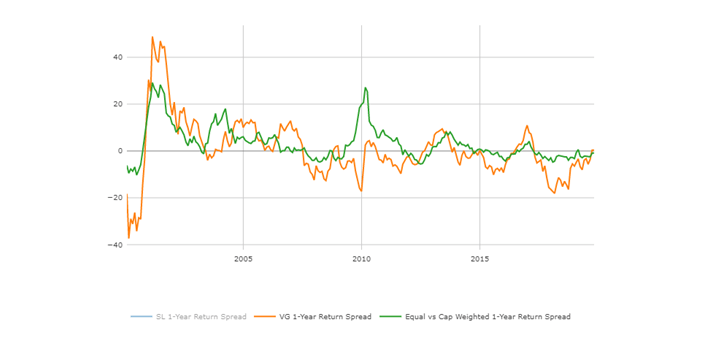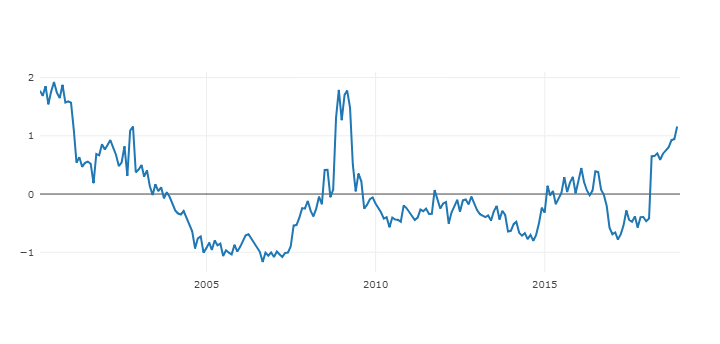Healthy earnings growth suggests to us that there is still upside in U.S. equities. We are encouraged that markets have shown a surprising level of stability given geopolitical and economic risks. Our quantitative assessment shows stocks that blend growth and value characteristics (growth at a reasonable price, or GARP) are well positioned for the late phase of economic expansion. Our thoughts remain with those affected by the recent storms in Texas, the Gulf Coast and Florida.
Economics
U.S. Economics. While our economy keeps ascending and generates few headlines, national politics takes the center stage in the media. Here, the picture is less rosy. Not only has the Administration’s legislative agenda stalled, but the pressing debt-ceiling debate has not even begun. Meanwhile, North Korea seems intent on advancing its nuclear capabilities. Moreover, the chance of a trade confrontation in Asia or North America appears significant. The Federal Reserve will soon be on the radar as well. In the near term, monetary tightening is highly unlikely, but in the long-run the economy will dictate the Fed’s moves.
Is U.S. GDP Growing That Slowly? Consumption constitutes more than 70% of the US GDP. Research suggests that consumption understatement affects at least a quarter of US consumption, and roughly $400bn in rapidly growing or evolving industries (Goldman Sachs, US Economics Analyst August 20th 2017). This suggests consumption growth could be understated by as much as 0.40-0.75pp per year on average (or 0.3-0.5pp in GDP terms). So, why don’t official numbers reflect reality? There are several reasons for that: sampling lags, new pricing models and misclassification of consumption. Sampling lags are most observable in three industries currently undergoing structural change: video rental, music media, and taxis. While sales have likely declined sharply for some firms and product lines (such as DVD rentals, music CD purchases, and some traditional cab service operators), the rapid growth of Netflix, iTunes/internet radio, and Uber/Lyft has probably offset some if not all of these declines in real consumption. It seems unlikely that society is watching fewer movies, listening to fewer songs, and taking fewer car passenger rides than it was a few years ago, yet this is what the national accounts data seems to suggest. New pricing models may also distort the accurate assessment of consumer spending. Consider calling an Uber, renting an Airbnb vacation home, or ordering a meal on Seamless: these firms receive as revenue only a small share of the actual consumption dollars involved (in contrast to a hotel, restaurant, or retailer). Taking into consideration the input from these business models without a proper adjustment may under-estimate their growth rate and the true level of consumption. Misclassification of consumption happens when new products and business models are not properly accounted for in the national accounts data. Consider the case of smartphones: the vast majority of smartphones are now purchased using financing or are heavily discounted by wireless carriers, which implicitly finance these purchases through a cell phone contract. This could result in smartphone consumption being misclassified as an intermediate input of wireless carriers (which would be omitted in the GDP calculations) or as telecom services revenues. These two potential misclassifications could result in understatement of real consumption (and GDP) levels on the order of $20-70bn (from smartphone hardware alone). So, as you can see, when the new methodology is implemented to properly account for new technologies and businesses it might turn out that our GDP has been growing a bit faster than officially portraited.
Global Economics
As JP Morgan reports, a wave of stronger-than-expected GDP reports pushed their 2Q17 global growth estimate to 3.7%. Last quarter was the strongest since mid- 2010, and the strength was impressive in its breadth. Above-trend growth was recorded across the globe with only a handful of notable exceptions (e.g., the UK, South Korea, and Brazil). Sectoral performance was also broad-based with manufacturing output rising in line with GDP and healthy gains recorded in both global retail and capital goods spending. While it has been clear for some time that the global economy was accelerating, the validation of broad-based strength at midyear, combined with the positive readings from the latest surveys, bolsters confidence that the expansion remains on a solid footing.
Because of Hurricane Harvey, we believe the risk of a shutdown of the federal government in early October is less likely. With federal relief efforts underway, the political risks of a government shutdown would be too much for Congress. A report form Goldman Sachs expects Congress to provide additional funds in September. That said, a shutdown or delayed debt ceiling hike is still clearly possible, if not this fall, then later, and the President continues to raise the possibility if the border wall is not funded.
Equities
US Earnings. Earnings reporting season concluded with more than 70% of the companies in the S&P 500 Index having exceeded profit expectations for the second quarter (source: Value Line). True, there have been some disappointments, and these have been dealt with harshly. On balance, however, the performance has been sufficiently positive to keep bulls on board.
Secular GARP stocks appropriate for the second phase of economic expansion. Sectors and industries which one would expect to do well in the late stages the economic expansion seem to be right on schedule. Information Technology (especially Software), Industrials, Materials and Real Estate are poised to outperform over the next 12 months, according to our proprietary Macro Model. Stable stocks seem to finally be losing some appeal. However, some of the factors which have been effective in this economic cycle are still relevant in our analysis: healthy levels of cash flow production, high margins, light capital spending, and large buybacks. These factors remain in our short and long term company specific scores.
Clear Growth Cycle with Large Cap dominance. Recent volatility hurt growth stocks. Nevertheless, we believe Growth companies are well positioned for the late phase of the economic expansion. Our quantitative assessment shows Large Caps continuing to score well relative to smaller caps, particularly in quality and profitability factors. However, on a GARP (growth at reasonable price) scale, smaller companies seem a bit more attractive. At this juncture, we are slightly tilted towards the mid cap as a compromise, since we believe in GARP framework prevailing through this phase of the economic cycle.
Fixed income
Despite the Fed raising rates, bonds may prove resilient – The US Federal Reserve has raised the federal funds rate four times so far, and we expect another rate hike this year. As bond yields rise, prices fall – that’s just how bonds work. However, we do not believe these actions should be a case for concern among bond investors. The Fed is raising rates very gradually. Investors should also remember that the Fed only has direct control over short-term rates. Longer-term rates are dictated more by market forces. We believe this is why the benchmark 10-year Treasury yield has hovered around 2.25% for the past 6 years, despite recent short-term rate hikes. So while short-term rates have increased by 1% over the last 18 months, the 10-year Treasury is roughly unchanged. Ultimately, we think the Fed’s actions shouldn’t steer investors away from using bonds to seek diversification and stability in a well-balanced portfolio of both stocks and bonds.
The information and opinions included in this document are for background purposes only, are not intended to be full or complete, and should not be viewed as an indication of future results. The information sources used in this letter are: Jeremy Siegel, PhD (Jeremysiegel.com), Goldman Sachs, JP Morgan, Empirical Research Partners, Value Line, Ned Davis Research, Citi research and Nuveen.



























































































